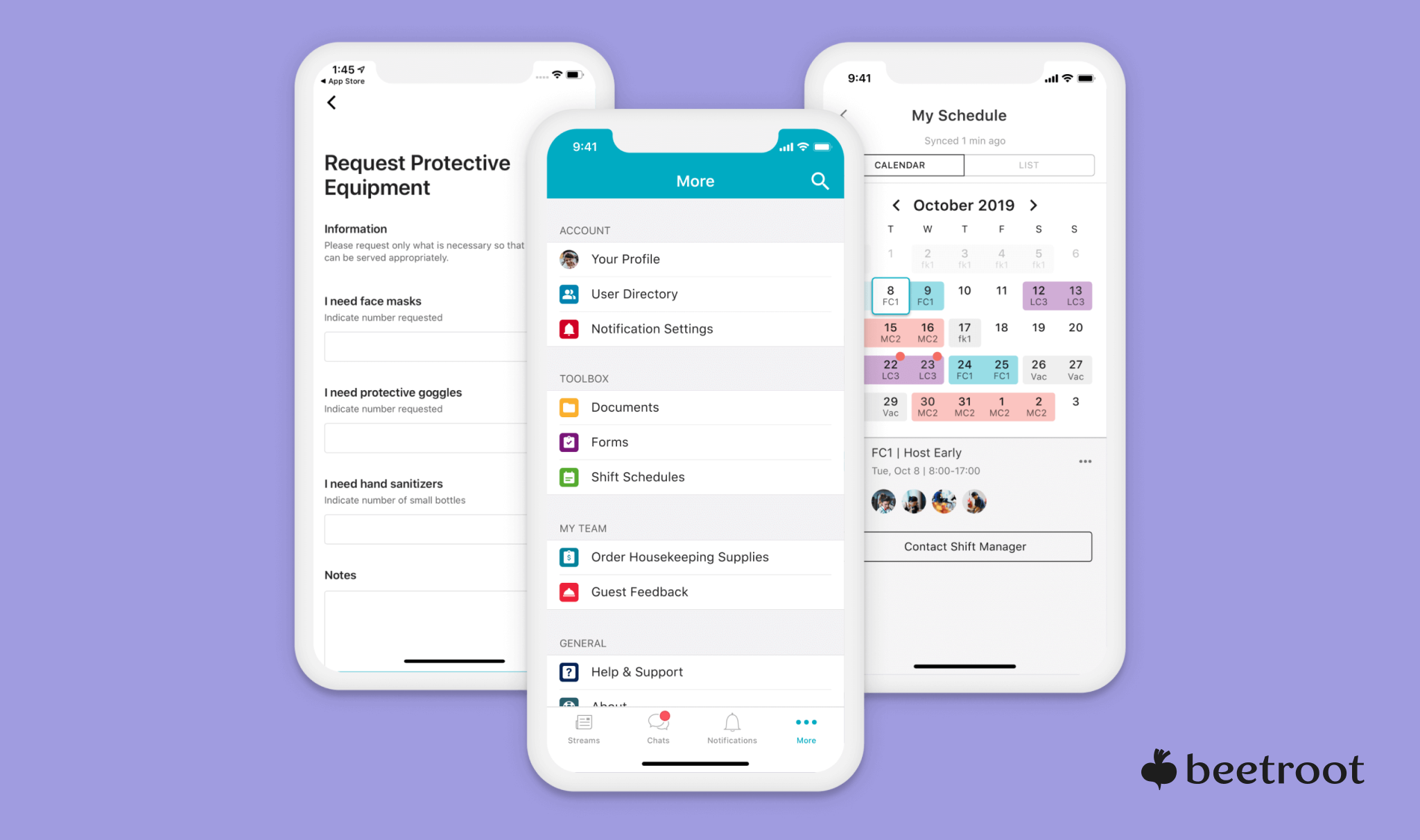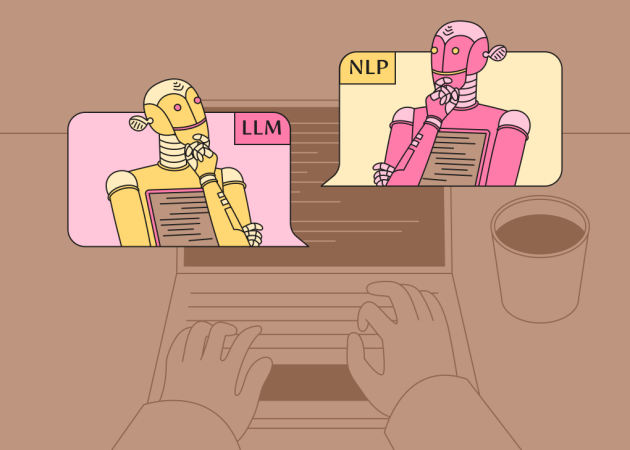
Unleashing Success: How Ownership Drives High-Performance Teams
Contents
Contents
In times of economic turbulence, companies across most industries balance investing in innovation and tightening their belts. Naturally, under these circumstances, businesses need to maximize the efficiency of their tech teams and eliminate costly mistakes that come with low or inadequate performance.
But what’s the key to creating high-performance teams that deliver solid results and preferably do it fast? In Beetroot’s experience, it lies in nurturing ownership within teams.
Beekeeper Work, one of the projects Beetroot worked on, is a proof to support how empowering and effective ownership can be for work teams. Read on to discover our takeaways from this project.
Case study: Cultivating Developer Ownership
It’s no coincidence that in an article about empowering teams through ownership, we decided to tell you a story of Beekeeper Work since this app is also very much about empowering teams, but in the hospitality industry.
Beekeeper Work is an app helping hospitality teams organize maintenance work, from creating a workflow to its validation. As a result, this product has become a tool for building high-performing teams and cultivating a positive employee experience, inevitably improving customer satisfaction.
The app enables users to:
- Create workflows for the rooms as a manager.
- Assign the tickets or workflows to teams or specific workers.
- Conveniently track ticket completion via the mobile and tablet dashboards completed by push notifications.
- Execute workflows as a worker, which includes taking tickets, working on them by modifying the status list and adding attachments, and requesting the work review.
- Review tickets as a manager, which includes accepting the work done or marking it to be redone by attaching the issues with photos in the form.
The client’s initial request for our team was to support existing iOS versions of the app and rewrite it from Swift UI to the standard UI Kit. Also, we needed to support the app’s stable operation and develop new features upon request.
We’ve allocated a team of 1 iOS developer, 1 Android developer, 1 QA manual, and 1 tech lead to meet these requirements. Not all of them worked full-time, though: the working conditions varied depending on the client’s needs. Moreover, developers were the ones carrying the primary responsibility for the product.
While transferring project ownership to developers is only suitable for some, our team got to test this approach on a number of projects, including Beekeeper. This experience proved the secret to managing high-performance teams is more than just skillful project managers or QA.
When working on Beekeeper, our developers were given decision-making authority, encouraged to take the initiative, and supported when guidance or additional expertise was needed. We’ll dive deeper into how we’ve established such an approach in the next section.

Lessons Learned and Impact on High-Performance Work Teams
We at Beetroot believe high-performing teams don’t get born out of constant surveillance and control. In fact, along with other factors, the opposite approach often nurtures them.
When an environment of trust, open communication, and cross-functional collaboration is at the core of project development, employees feel like owners who have a real influence on the project. As a result, this increases a sense of individual and collective commitment to the main goal and motivates the workers to act in the interests of everyone involved: the team, the stakeholders, and the end customers.
Additionally, this sense of responsibility for the quality of the product and the code helps teams identify and mitigate potential risks and issues before they escalate into disasters. In the case of software development, this allows our consultants to reduce production errors and critical bugs by owning the deployment pipeline.
During 13 months of Beekeeper’s development, the Beetroot team managed to:
- Implement backward compatibility of the app (which was not the case before our involvement) for older iOS versions.
- Develop a crash protection solution so that if an uncaught exception occurs, the application catches it on a higher level, sends the exception report to our diagnostics system of choice, and shows a screen for users with a “reboot” CTA. As a result, the application never actually crashes.
- Integrate an analytics system into the app using Amplitude and Mixpanel.
- Implement adaptive UI/UX layouts for admin users depending on the device.
- Achieve remote localization with Transifex and automated upload of new strings/messages for translation.
- Make sure velocity does not slow down with the project’s growth thanks to tech leads identifying and working on technical debts and code parts rework to facilitate the stable development speed.
- Integrate a CI/CD solution using Beetroot infrastructure to automate deployments and then migrate it to the customer’s infrastructure using environment-independent Fastlane scripts, reducing time spent on deployment. The CI/CD environment became a thin driver between the container executing the pipeline and the Fastlane script set in place.
The project’s most significant achievement was the end product itself. Beekeeper Work is a tool that encourages communication, boosts employer engagement, and provides teams with everything they need to do their best work. And to top that, we are sure that this app will trigger the appearance of multiple high-performance team examples for businesses to follow.
After practicing developers’ ownership of software projects, Beetroot roots for any team who wants to try this approach. Here are a few tips that can help you get started on a journey of building high-performance teams and ensuring they feel empowered.

Make Sure Everyone’s on the Same Page
When getting down to a new task, start by providing the team with all the essential information and syncing up before the project begins. It includes information about the project, the objectives that need to be achieved with it, and the KPIs to measure the results. We also suggest discussing the big-picture stuff, like the end goal of the project and the company’s long-term objectives in general, to give the team a sense of purpose.
Understanding project goals and scope allows the team to feel in control of their responsibilities and develop their development strategies while still delivering the results all parties expect.
Such a sync-up might require much effort to engage the team, the client, and the stakeholders, but the outcomes are worth it.
Encourage Open Communication
Asking questions and voicing doubts is not a sign of incompetence or disrespect. They are actually an indicator that the team genuinely cares about the project. Therefore, it’s crucial to encourage the teammates to raise their concerns and make suggestions even when the decision comes “from the top.”
At Beetroot, we rejected traditional vertical organizational structures and instead decided to foster collaboration and teamwork between consultants regardless of their titles, expertise, and experience. In practice, this leads to teammates being fearless in challenging ideas if they see a more efficient way to improve the project’s outcomes positively.
It’s important to note that smashing traditional organizational structures doesn’t mean leaving the team one-on-one with the challenges. Sure, you need to trust their expertise. But also be ready to provide guidance when needed.
Don’t Confuse Blame and Ownership
High-performing teams do take on accountability along with ownership. However, contrary to a common misconception, establishing ownership doesn’t mean business executives shift the blame for possible project failures to the tech team.
Suppose the sole purpose of fostering ownership is to find a responsible party if any mistakes are made. In that case, the team will hardly take the initiative and get involved in decision-making.
Responsibility and ownership are a team effort in healthy and high-performing work environments. If all the specialists involved in the project understand its purpose and get on board with fulfilling it, the whole team has a sense of responsibility for the results.
That is one of the reasons we at Beetroot usually partner up with companies that share the same values as we do and strive to build impactful products for the HealthTech, Climate Tech, and EdTech sectors. We know that Beetroot consultants are devoted to making an impact with their work. Thus, building meaningful products encourages the team’s involvement in decision-making and increases the effectiveness of their input.
Support skill development
Taking ownership of the project involves a proper mindset and technical expertise. Company executives and team leads can create a work environment encouraging skill growth and providing learning opportunities. This includes workshops, conferences, and peer-to-peer knowledge sharing.
We also suggest embracing such practices as mentorship programs and pair programming initiatives, establishing learning communities and interest groups, and trying out knowledge-sharing meetings like lunch-and-learn sessions.
One of the perks of horizontal organizational structures is that they inspire teammates with different expertise to communicate, collaborate, and even put themselves in each other’s shoes. As a result, you get to work with leading high-performance teams with solid and constantly growing collective expertise.
Empowered Teams — Compelling Results
Communicating, encouraging a proactive attitude and innovative ideas, and establishing a healthy balance of ownership and accountability will gradually improve your team’s performance. But the results of such an approach can be truly game-changing.
Following the steps mentioned above helps organizations create empowered, dedicated, highly motivated, and high-performing teams driven by impactful project outcomes just as strongly as the business leaders.
If you’re looking to hire a tech team that fosters ownership or want to build a product that helps other teams perform better, Beetroot is always ready to assist you, so feel free to reach out.
Subscribe to blog updates
Get the best new articles in your inbox. Get the lastest content first.
Recent articles from our magazine
Contact Us
Find out how we can help extend your tech team for sustainable growth.







